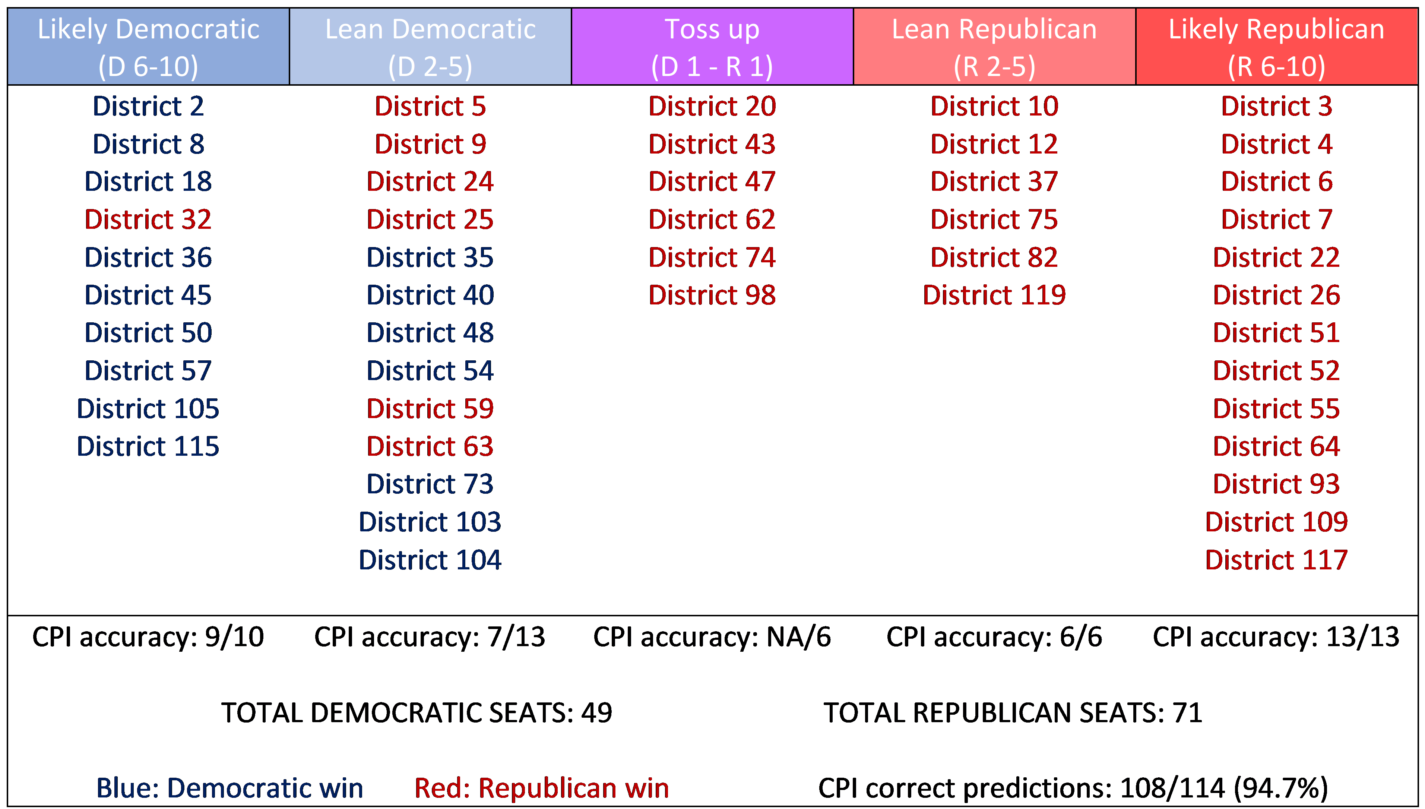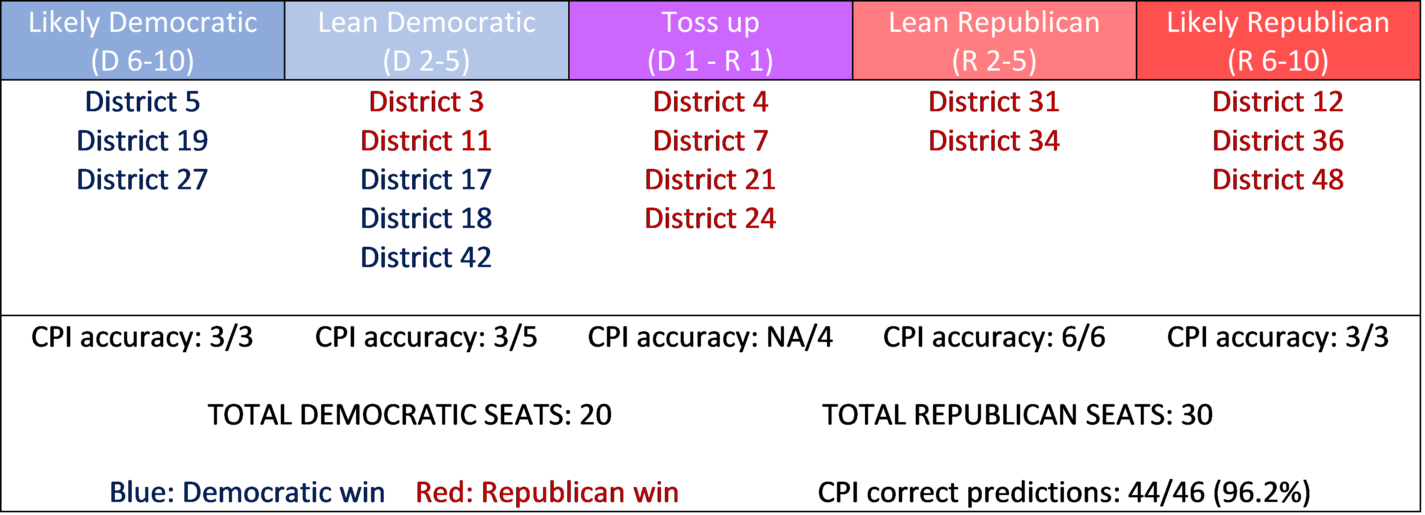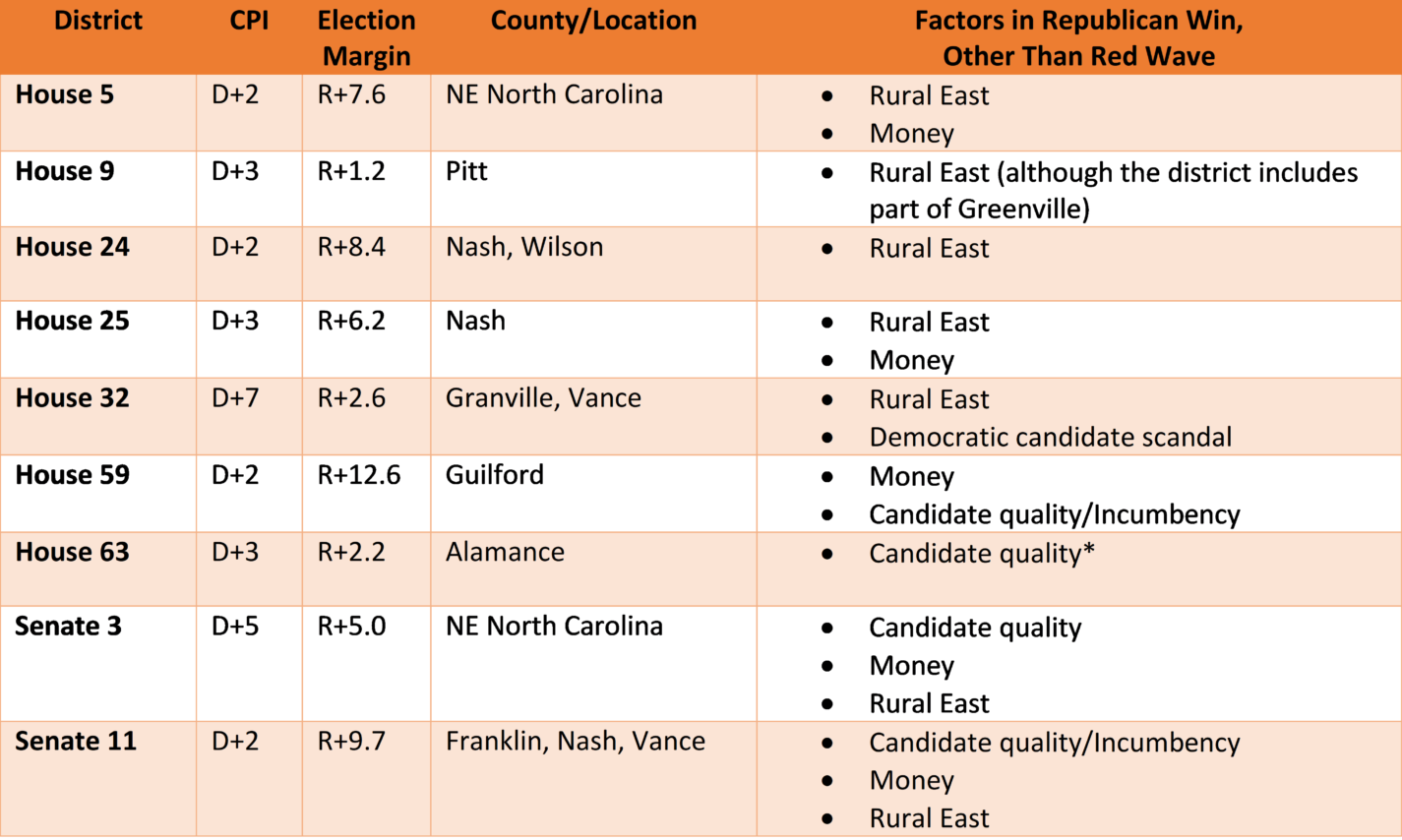- The Civitas Partisan Index (CPI) is a measure of the partisan tendencies of North Carolina legislative districts
- The CPI proved to have solid predictive data in 2022
- Several factors, most notably the red wave election in North Carolina, explain how Republicans won in several Democratic-leaning districts in the election
North Carolina’s 100 county boards of elections conducted their canvasses on November 18, 2022. They counted the last mail ballots and decided which provisional ballots to accept. With those tasks completed, they reported each county’s official vote count. Those counts will be certified at the State Board of Elections meeting on November 29.
With the vote counts now official, it is time to review how the Civitas Partisan Index (CPI) performed as a tool to evaluate the partisan lean of North Carolina General Assembly districts.
What Is the Civitas Partisan Index?
We model the CPI after the Cook Political Report’s Partisan Voting Index (PVI). The 2022 CPI took precinct-level results of the ten 2020 Council of State races using data from the North Carolina State Board of Elections. (Click here for a fuller description of our methodology.)
While the PVI measures the base partisan leanings of congressional districts, the CPI looks at the partisan leanings of North Carolina state legislative district compared with the state as a whole. The CPI score lists the party the district tends to favor, followed by a number indicating the relative lean of the district toward that party. For example, a district that tends to vote about 3 percent more Democratic than the state average would have a CPI score of D+3.
We also assigned a rating to each district based on its CPI score. We rate districts with a CPI of 0–1 in either direction as a toss-up; 2–5, lean; 6–9, likely; and ten or more, safe seats for the respective parties. Districts with a 0 rating have a partisan lean of less than half a percentage point. The D+3 district in the example above would be rated lean Democratic.
How Accurately Did the Civitas Partisan Index Predict Results?
The Civitas Partisan Index is not a predictive model, since it does not include factors like incumbency and candidate quality. It provides a baseline of expected major party distribution of votes in state legislative races. A well-constructed index should accurately reflect voting behavior, all other factors being equal (more on the factors that were not equal in the next section).
So how well did the CPI perform?
As seen in Table 1, a person using nothing except the CPI would have correctly predicted the result in 108 of the 114 North Carolina House districts the CPI assigned a partisan tendency, a 94.7% accuracy rate. (The table does not include 33 safe Democratic and 39 safe Republican House districts.)
Table 1: Winning North Carolina House races by Civitas Partisan Index rating, excluding 33 safe Democratic and 39 safe Republican districts

The CPI performed similarly well in the Senate. Only two of the 46 seats assigned a partisan tendency by the CPI went to the other party, an accuracy rate of 96.2% (see Table 2). (The table does not include 14 safe Democratic and 17 safe Republican House districts.)
Table 2: Winning North Carolina Senate races by Civitas Partisan Index rating, excluding 14 safe Democratic and 17 safe Republican districts

The Predictable Inaccuracies of the Civitas Partisan Index
Even when election results varied from the expectations produced by the CPI, they varied in predictable ways.
The common factor in all the races that seemingly betrayed their districts’ CPI ranking was that 2022 was a red wave election in North Carolina, in which Republicans did relatively well across the state and won in eight lean Democratic and one likely Democratic races. That consideration is why we included lean-Democratic districts in our list of General Assembly races to watch in the 2022 election.
Such wave elections are ordinary in midterms, with the party controlling the White House suffering losses. That was true in the 2018 Trump midterm, a blue wave election in which Democrats won in seven lean-Republican districts and one likely-Republican district.
If we look at the individual races where Republicans won in lean or likely Democratic districts, we can see other factors that likely have contributed to those results (see Table 3). One such factor includes being in rural areas in the state’s eastern half. Those areas have traditionally been Democratic but are trending Republican. Other factors include incumbency, money, and candidate quality.
Table 3: Factors that help explain how Republicans won in districts rated as lean or likely Democratic

*Although Democrat Ricky Hurtado was the incumbent in House District 63, Ross had previously won several elections in that district and has deep political ties in Alamance County.
Candidate quality is an elusive term but widely considered crucial in election outcomes. It is also bound with fundraising and incumbency since better candidates can often raise more money and are more likely to become incumbents by winning elections. For example, Bobby Hanig, the winner of North Carolina Senate District 5, had already won elections for Currituck County Commissioner and the North Carolina House. He has a reputation as a strong campaigner. His opponent had no election experience.
In the House District 32 race, a report that incumbent Terry Garrison had assaulted his then-wife in 1994 likely contributed to his defeat.
The 2024 election will have a higher turnout and will not have the midterm effect that tends to make winning harder for the president’s party. Those factors will likely mean election results will be even more aligned with the Civitas Partisan Index’s ratings of partisan tendencies.


